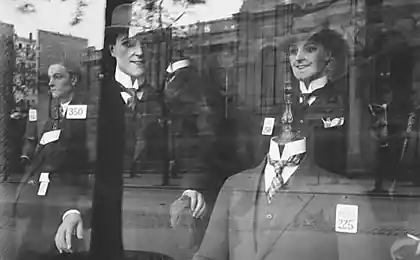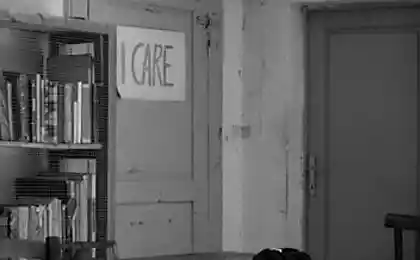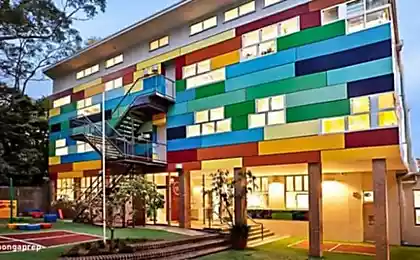232
How did the children of Soviet times live and what is their main difference from modern schoolchildren?
The current situation in Russia is beginning to resemble the worst pages in the history of the USSR. You've probably seen empty shelves in stores before. And the appearance of scarce goods trumpet from each iron. I wonder how this will affect the younger generation. And will modern children become the same? Soviet children?

Many will say that this is impossible, because children born in the 21st century are too far from the realities of the Land of Soviets. However, we can draw some conclusions on this point by remembering history. How Soviet schoolchildren lived and what distinguishes them from modern students, read further in the article.
Perhaps, not everyone is nostalgic for school times, and this is normal. To deny the importance of this period is foolish. After all, in school each child goes through several stages of growing up. Teenagers fall in love for the first time, begin to make visionary plans and think about their future seriously. Increased motivation and ambition, confidence in themselves and their capabilities.
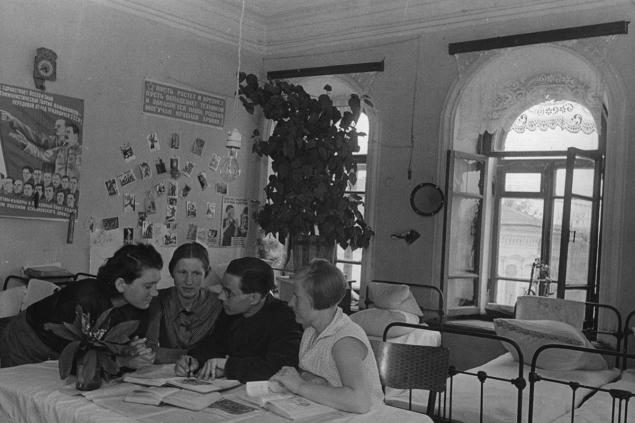
Speaking about the life of the Soviet schoolboy, it is important to understand what the overall education system was in the last century. The principles of Soviet education were outlined in 1903, long before the revolution. For example, education should be free, and students themselves should not be limited either by class or nationality.
When power was in the hands of the Bolsheviks, the question of education was very pressing. The first goal is elimination of total illiteracy of the population - was reached very soon. By the end of the 20s, the number of Soviet students was almost 10 million people.

In the 30s, the development of education received a new impetus. As the country was in full swing of industrialization, emphasis was placed on the knowledge needed for future engineers. The number of lessons devoted to exact sciences has increased. There were over 30 million students.
During the Second World War, the development of education in the USSR was on pause. However, in the 50s, the situation stabilized. In 1959 there was another census. It showed that illiteracy was almost completely eliminated. This is a really good result, considering how much devastation in all areas of life the decades-long war has brought. In the following years, the formation of the USSR developed rapidly.

Soviet children always wore school uniforms. The golden rule was: All are equal. That means everyone should dress the same way. There is no reason to be jealous of each other. Interestingly, many modern schools, not only in Russia, but also in other countries of the world, still adhere to this system. I once wrote an article about the pros and cons of uniforms.
In Stalin’s times, a new school uniform appeared. The boys wore a strict suit in style, as they would now say, militarist. The gray pants and shirt looked like a soldier’s gymnast. The image was complemented by a wide belt with a massive buckle, as well as a cap. The outfit for the girls consisted of a brown dress and a white apron with a collar. For any deviation from the school uniform, the school administration punished.

Throughout history, the Soviet school has changed several times. For example, during the perestroika, pupils of schools, technical schools and universities wore an ordinary blue trouser suit. It became so popular that even adult men began to buy it.
The development of the school menu was carried out by scientists from the Research Institute of Hygiene and Child Health. Nutrition of students should be as balanced and useful as possible. For example, fried and spicy dishes were banned. Cooks preferred soups and other boiled dishes.
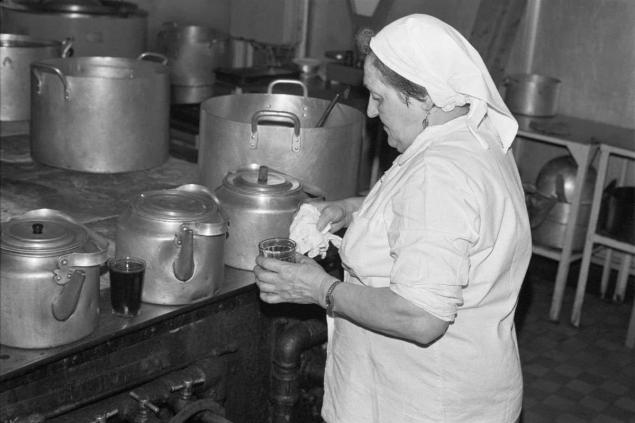
It was possible to eat during a special half-hour break. Also in schools there were buffets, where Soviet schoolchildren bought various pastries, tea, juices and other drinks. The average cost of a full school lunch was 15-20 kopecks. Usually, parents paid 5 rubles a month to cover all the costs of feeding their children.
In Soviet schools, special attention was paid to hygiene and health. Students were taught how to brush their teeth properly. Students were also taught a strict daily routine. Eat and go to bed at the same time. I must say that this advice is relevant to this day. In addition, students underwent an annual medical examination, and were vaccinated against various diseases.
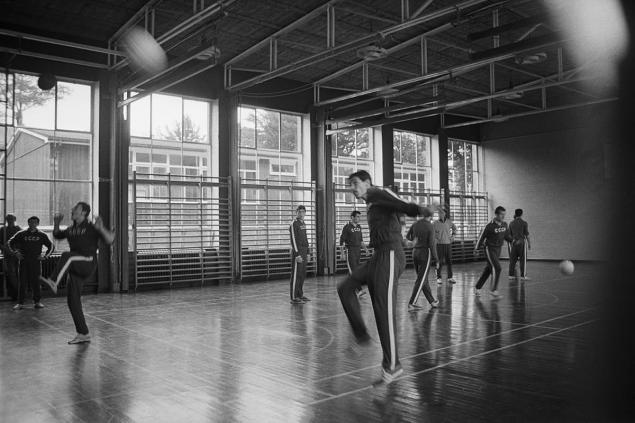
Children of the Soviet era led an active lifestyle. They spent more time outside than our kids. After all, now everyone likes to put their nose in gadgets. Well, perhaps, the modern younger generation is unlikely to become similar to its predecessors. But does it have to be a backlash to the past? Share your opinion in the comments!
Photo in article

Many will say that this is impossible, because children born in the 21st century are too far from the realities of the Land of Soviets. However, we can draw some conclusions on this point by remembering history. How Soviet schoolchildren lived and what distinguishes them from modern students, read further in the article.
Perhaps, not everyone is nostalgic for school times, and this is normal. To deny the importance of this period is foolish. After all, in school each child goes through several stages of growing up. Teenagers fall in love for the first time, begin to make visionary plans and think about their future seriously. Increased motivation and ambition, confidence in themselves and their capabilities.

Speaking about the life of the Soviet schoolboy, it is important to understand what the overall education system was in the last century. The principles of Soviet education were outlined in 1903, long before the revolution. For example, education should be free, and students themselves should not be limited either by class or nationality.
When power was in the hands of the Bolsheviks, the question of education was very pressing. The first goal is elimination of total illiteracy of the population - was reached very soon. By the end of the 20s, the number of Soviet students was almost 10 million people.

In the 30s, the development of education received a new impetus. As the country was in full swing of industrialization, emphasis was placed on the knowledge needed for future engineers. The number of lessons devoted to exact sciences has increased. There were over 30 million students.
During the Second World War, the development of education in the USSR was on pause. However, in the 50s, the situation stabilized. In 1959 there was another census. It showed that illiteracy was almost completely eliminated. This is a really good result, considering how much devastation in all areas of life the decades-long war has brought. In the following years, the formation of the USSR developed rapidly.

Soviet children always wore school uniforms. The golden rule was: All are equal. That means everyone should dress the same way. There is no reason to be jealous of each other. Interestingly, many modern schools, not only in Russia, but also in other countries of the world, still adhere to this system. I once wrote an article about the pros and cons of uniforms.
In Stalin’s times, a new school uniform appeared. The boys wore a strict suit in style, as they would now say, militarist. The gray pants and shirt looked like a soldier’s gymnast. The image was complemented by a wide belt with a massive buckle, as well as a cap. The outfit for the girls consisted of a brown dress and a white apron with a collar. For any deviation from the school uniform, the school administration punished.

Throughout history, the Soviet school has changed several times. For example, during the perestroika, pupils of schools, technical schools and universities wore an ordinary blue trouser suit. It became so popular that even adult men began to buy it.
The development of the school menu was carried out by scientists from the Research Institute of Hygiene and Child Health. Nutrition of students should be as balanced and useful as possible. For example, fried and spicy dishes were banned. Cooks preferred soups and other boiled dishes.

It was possible to eat during a special half-hour break. Also in schools there were buffets, where Soviet schoolchildren bought various pastries, tea, juices and other drinks. The average cost of a full school lunch was 15-20 kopecks. Usually, parents paid 5 rubles a month to cover all the costs of feeding their children.
In Soviet schools, special attention was paid to hygiene and health. Students were taught how to brush their teeth properly. Students were also taught a strict daily routine. Eat and go to bed at the same time. I must say that this advice is relevant to this day. In addition, students underwent an annual medical examination, and were vaccinated against various diseases.

Children of the Soviet era led an active lifestyle. They spent more time outside than our kids. After all, now everyone likes to put their nose in gadgets. Well, perhaps, the modern younger generation is unlikely to become similar to its predecessors. But does it have to be a backlash to the past? Share your opinion in the comments!
Photo in article
Boy pensioner told how she learns even after 60 years
How to cook a pan of dumplings without meat that will taste better than meat
